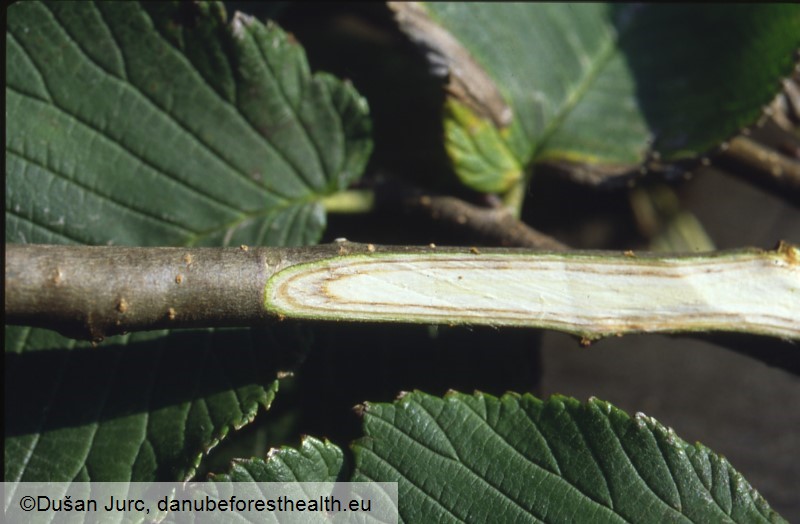Fungi
Dutch elm disease
Ophiostoma novo-ulmi
Nikica Ogris, Thomas Cech
|
|

Fig. 1. Dieback of shoots and branches

Fig. 2. Brown discoloration of the wood rings
DETECTION PERIOD:
whole year
DESCRIPTION:
The fungus causes disease of the tree's vascular system (tracheomycosis): because of the plugging of the vessels, the leaves of the infected branches wilt and then wither (Fig. 1). The fungus rapidly spreads through the wood and the tree dies within a few years. Dieback is usually accelerated by attack of the elm bark beetles (Scolytus spp.). These are the vectors of the disease. They carry spores of the fungus on their bodies and within excrements. A characteristic symptom is the brown discoloration of wood ring in the twig or stem cross section (Fig. 2).
HABITAT:
All elm species are endangered (Ulmus spp.).
STATUS:
A similar species (Ophiostoma ulmi) caused the first wave of elms dieback in Europe, and the invasion of the second species, which is now probably predominant (O. novo-ulmi) resulted in the second wave of elms dieback. It causes massive dying of the elms. The disease occasionally occurs throughout Danube region.
IMPACT:
The disease has greatly reduced the number of elms in European forests. However, this pan-continental epidemic did not cause the extinction of elms, simply because young trees are not attacked by the beetles and are able to produce seeds at least one time before they become infected. Therefore, the disease caused a distinct rejuvenation of the elms in Europe, old aged trees are meanwhile very rare.
SIMILAR SPECIES:
Similar symptoms occur in the case of Verticillium wilts (e.g. Verticillium albo-atrum and V. dahliae).
|